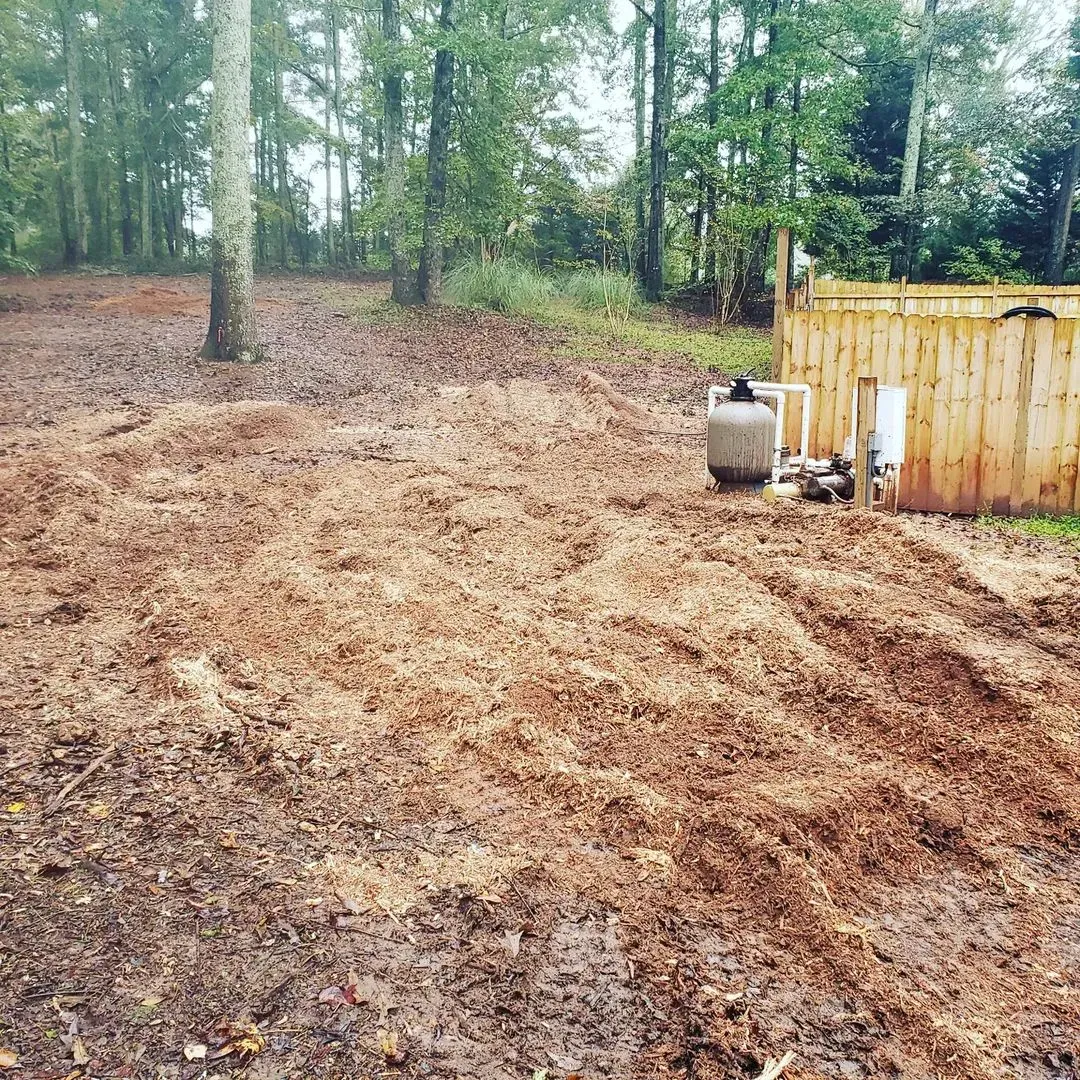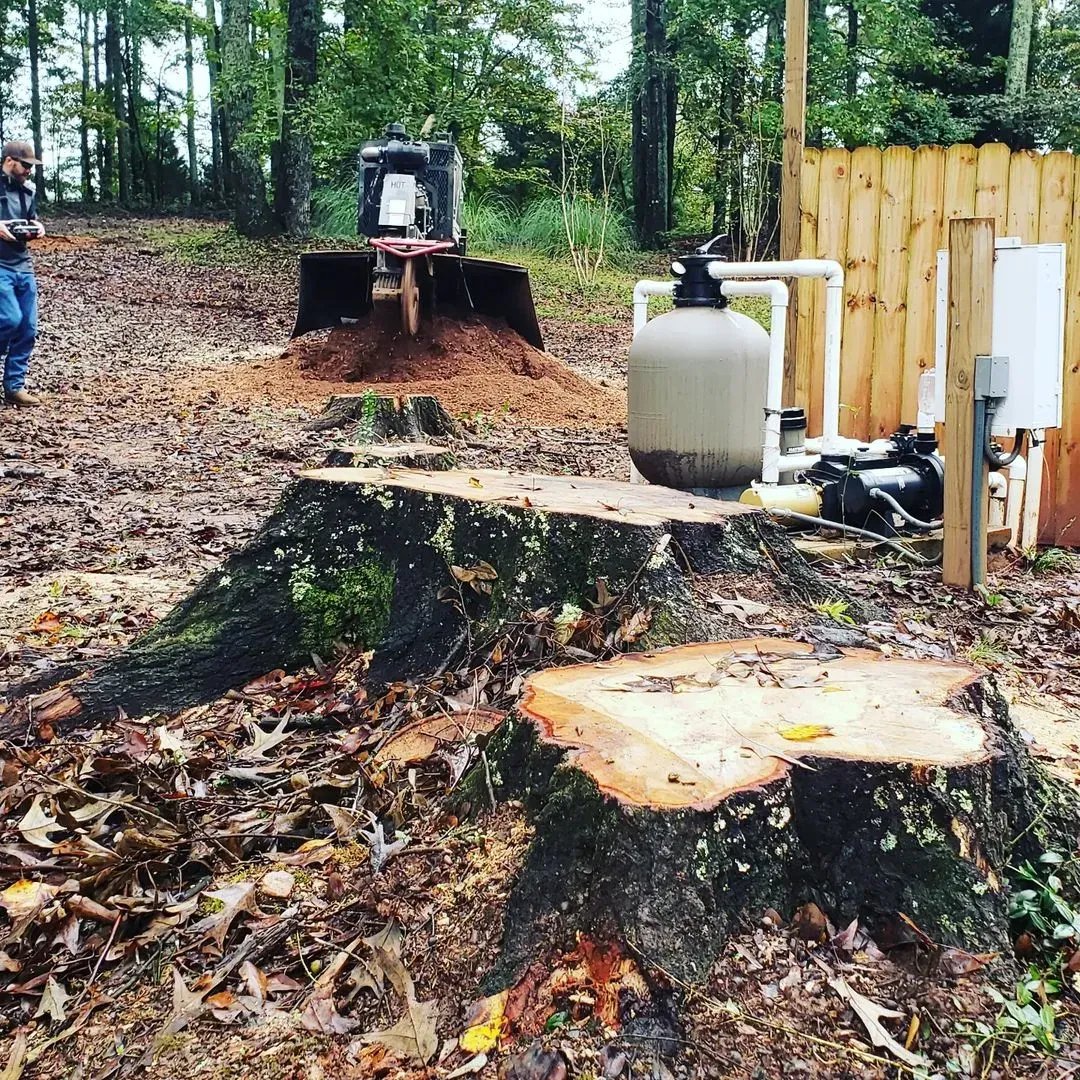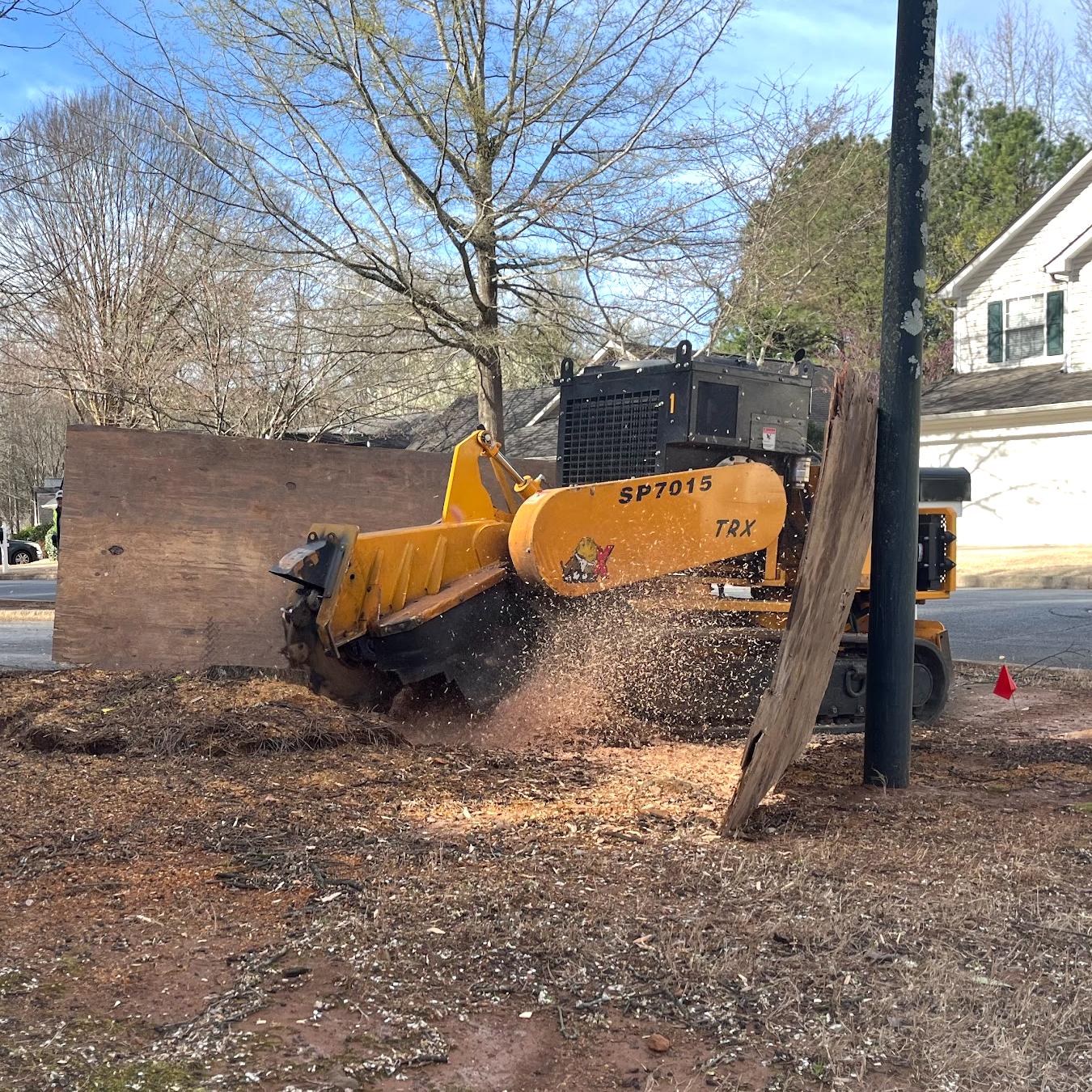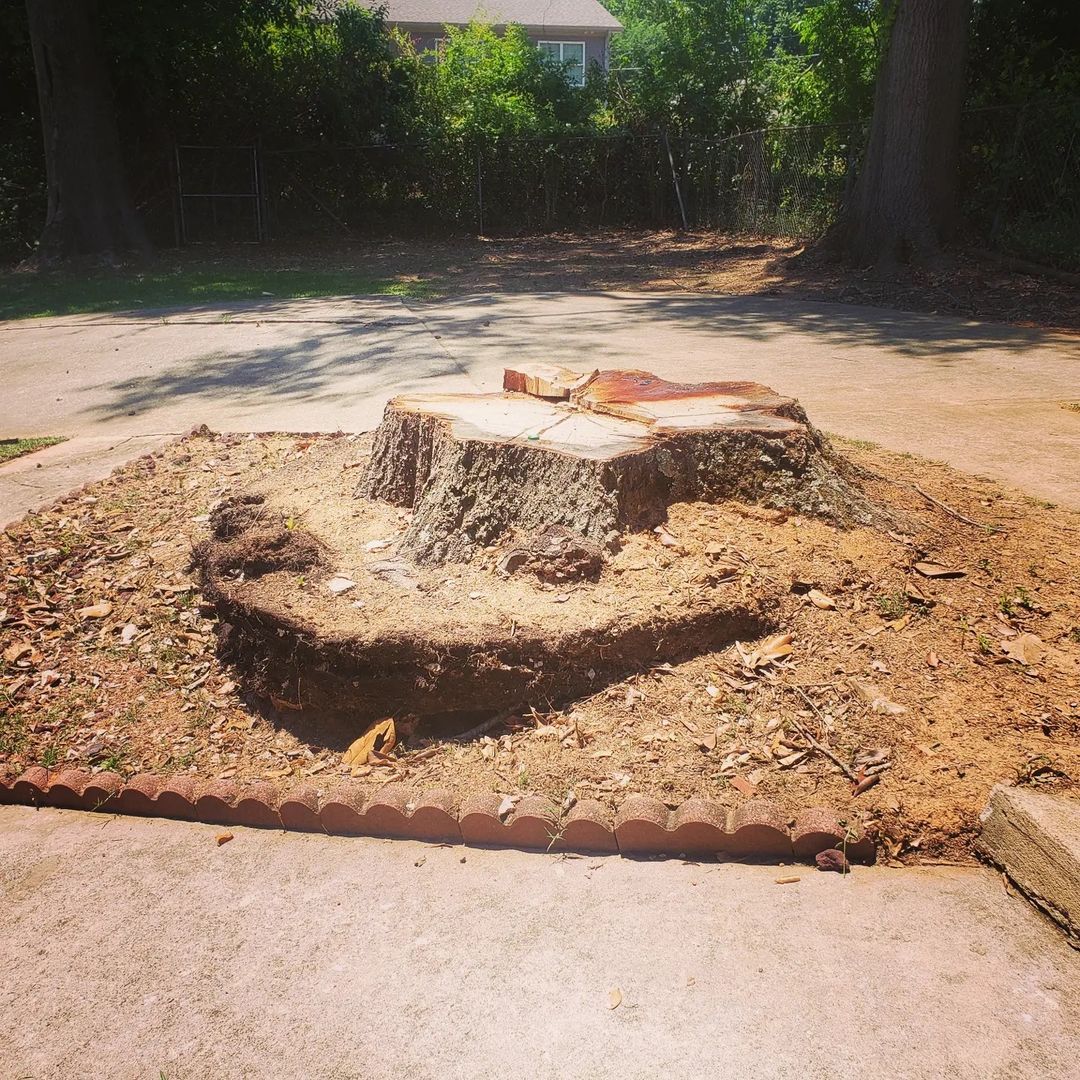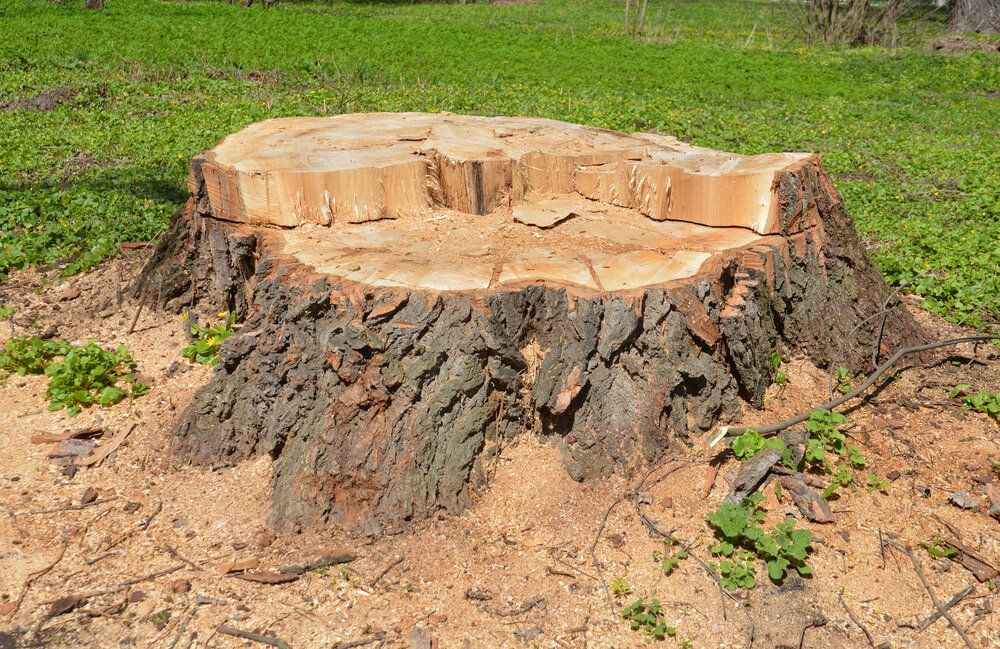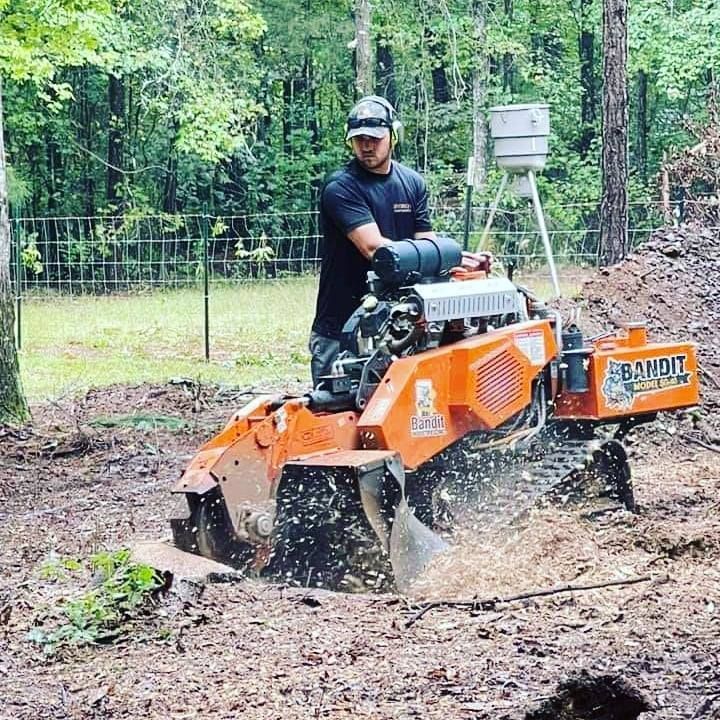Will stump grinding damage my property?
Stump grinding is a common solution for removing unwanted tree stumps from your yard, enhancing both the aesthetics and usability of your outdoor space. However, homeowners often express concerns about the potential for this process to damage their property. In this comprehensive blog post, we will explore how stump grinding works, its potential risks, and how to mitigate them, especially focusing on residential properties in Atlanta, GA.
Understanding Stump Grinding
Stump grinding is a procedure that employs a specialized machine with a high-speed rotating blade equipped with carbide teeth. This machine grinds the wood of the stump into small chips, which can be used as mulch or removed, depending on the client's preference. The process is efficient, typically removing stumps to a depth of 6 to 12 inches below ground level. This depth is sufficient to effectively eliminate the stump from sight without significantly disturbing the surrounding landscape.
Potential Risks to Property
While stump grinding is generally safe when performed by experienced professionals, there are several potential risks to be aware of:
- Surface Damage: The machinery used in stump grinding is heavy and could potentially damage your lawn, garden paths, or nearby paved areas. The risk of surface damage is particularly significant if the equipment needs to be transported across soft or landscaped areas.
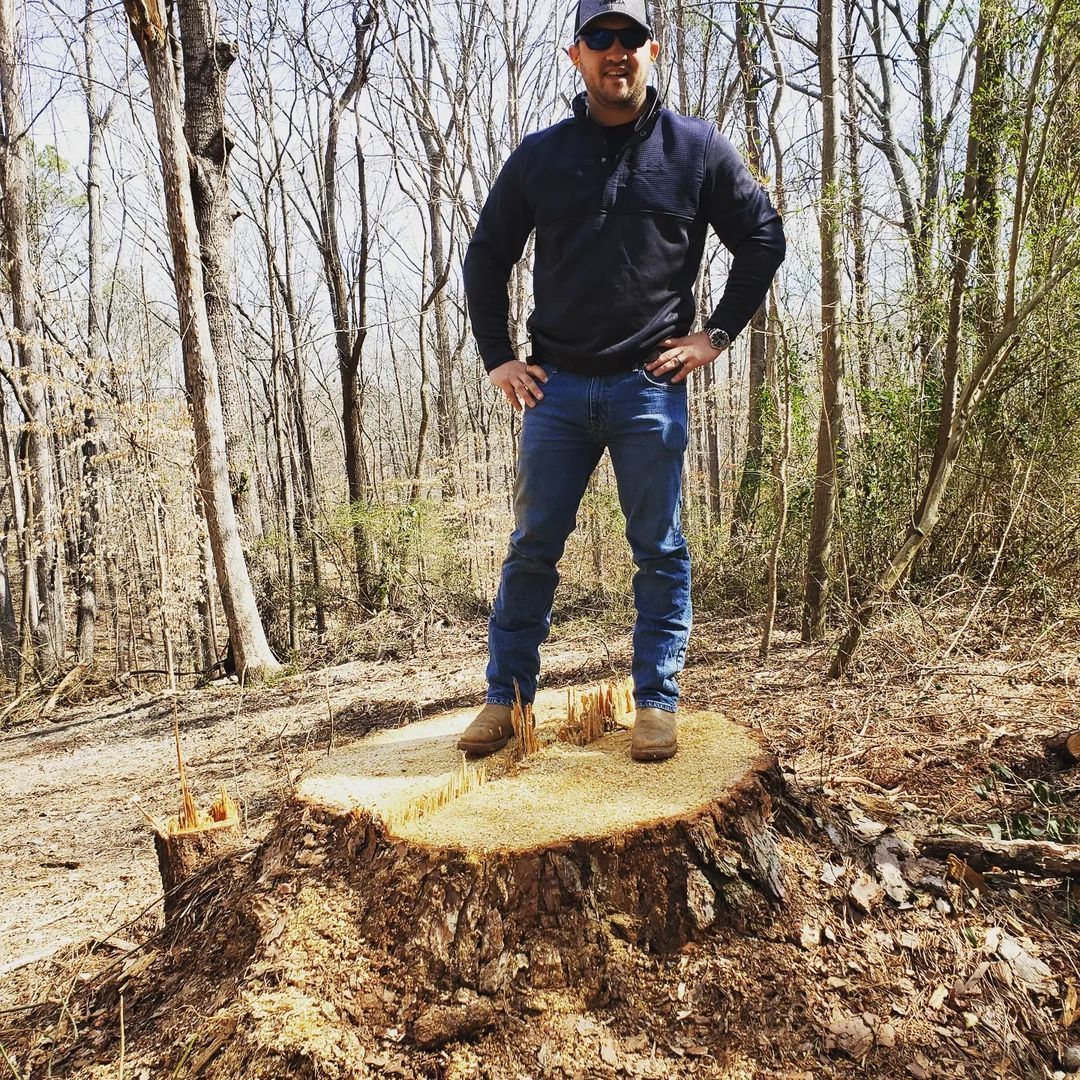
- Flying Debris: During the grinding process, wood chips, soil, and small rocks can be ejected at high speeds. This can pose a risk to nearby windows, vehicles, and other fragile structures. In addition, it could be hazardous to people and pets if they are in the vicinity without proper protection.
- Utility Lines: Occasionally, tree roots grow entwined with underground utility lines including water, gas, and electrical services. Grinding into these roots can potentially cause disruptions or damage to these services, leading to costly repairs and safety hazards.
Mitigating Risks
To ensure that stump grinding does not adversely affect your property, consider the following precautions:
- Professional Service: Always hire a professional stump grinding service that is licensed and insured. Experienced professionals understand how to navigate the complexities of the job and are equipped to handle unexpected situations, such as discovering buried utility lines.
- Pre-Work Assessment: Before the stump grinding begins, a thorough assessment of the area should be conducted. This includes checking for the presence of utility lines, assessing the type of soil, and understanding the layout of your garden to determine the best approach for bringing in and operating the machinery.
- Protective Measures: To safeguard windows and other vulnerable structures, set up protective barriers or plywood shields around the work area. Ensure that all people and pets are kept at a safe distance from the operation.
- Post-Grinding Cleanup: After the stump has been ground down, there may be a significant amount of debris and wood chips left behind. Professional services typically offer cleanup as part of their package, ensuring that your property is left neat and free from potential hazards.
- Lawn and Garden Repair: If any part of your garden or lawn is damaged during the stump grinding process, discuss with your service provider about the steps they will take for restoration. This might include reseeding grass or repairing paved areas.
Conclusion
Stump grinding is a highly effective method for removing tree stumps with minimal disruption to the surrounding area. However, understanding the potential risks and preparing accordingly can help ensure that the process does not adversely impact your property. By choosing the right professionals and taking appropriate precautions, homeowners in Atlanta, GA, can confidently use stump grinding to enhance the beauty and functionality of their landscapes without worrying about property damage. This approach not only clears unwanted stumps but also contributes to maintaining a safe and appealing outdoor environment.
If you're contemplating the use of a
stump grinder on your property and are in search of professional guidance or services, feel free to
contact us here at
Ness Stump Grinding. We invite you to reach out for a customized consultation and to receive a complimentary estimate. Allow us to assist you in restoring your landscape and transforming your vision into a tangible reality. With our expertise at your disposal, you can confidently address any stump-related issues and enhance the beauty and usability of your outdoor space.
Like This Post? Share It Here...
